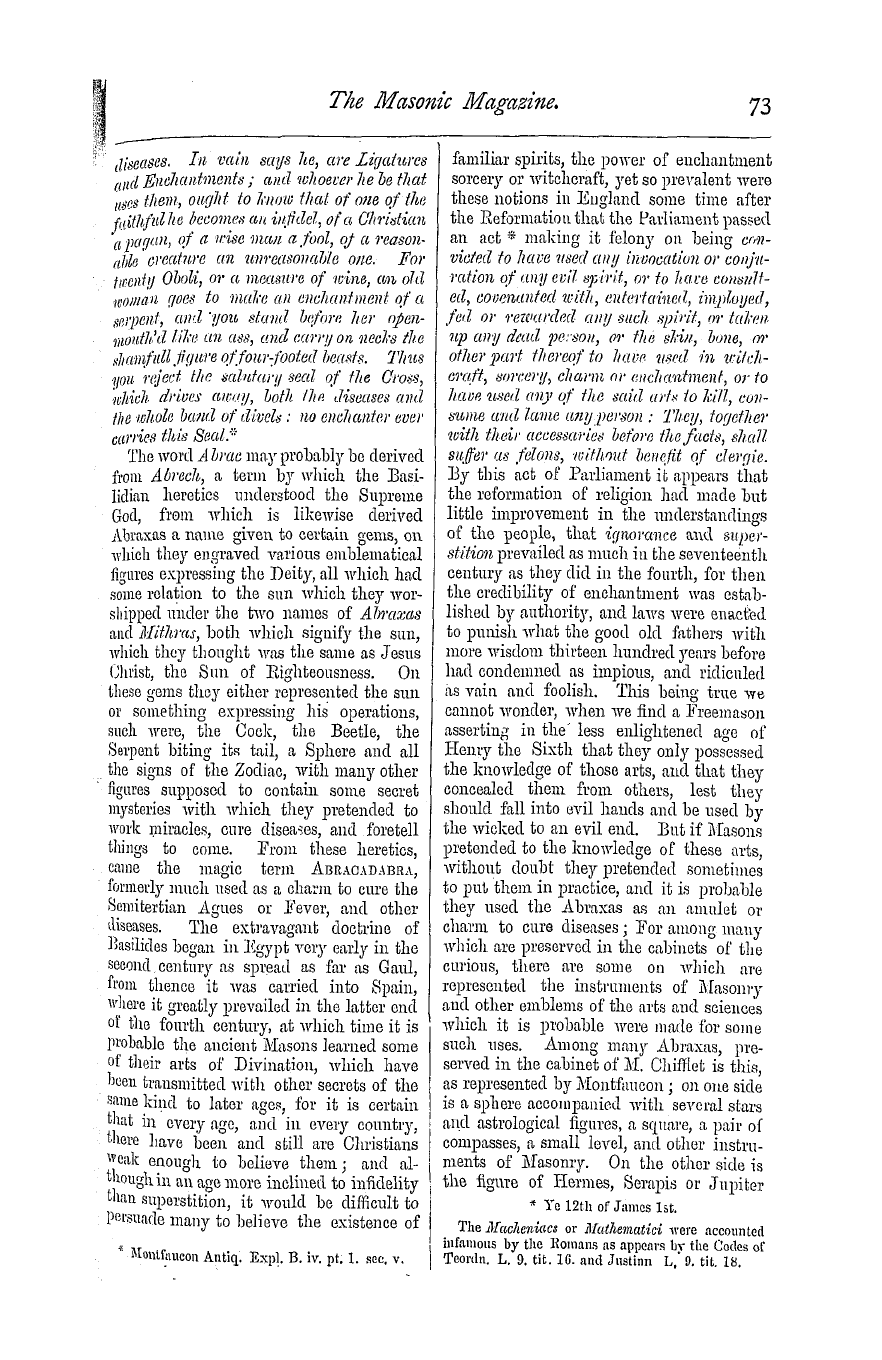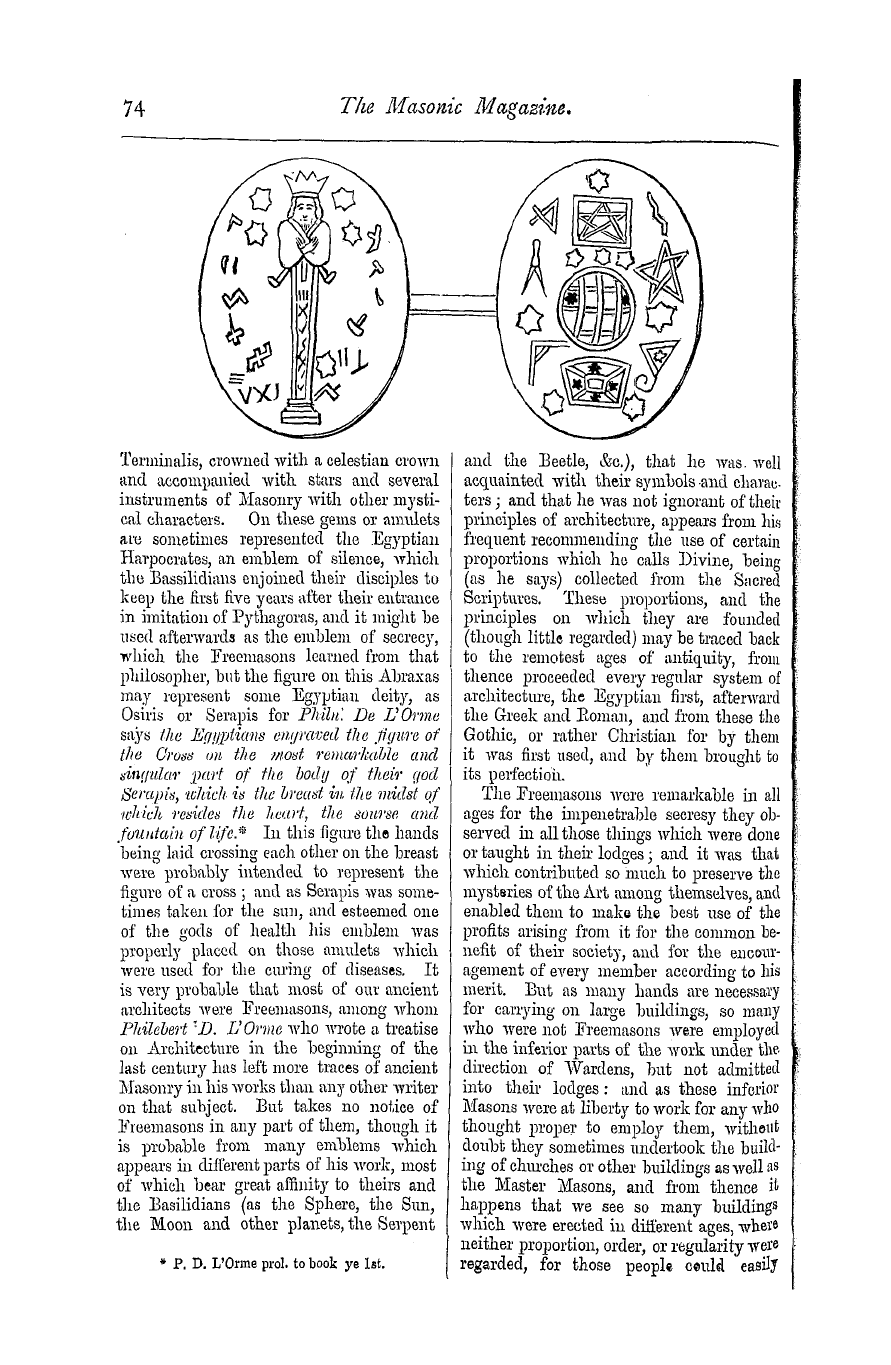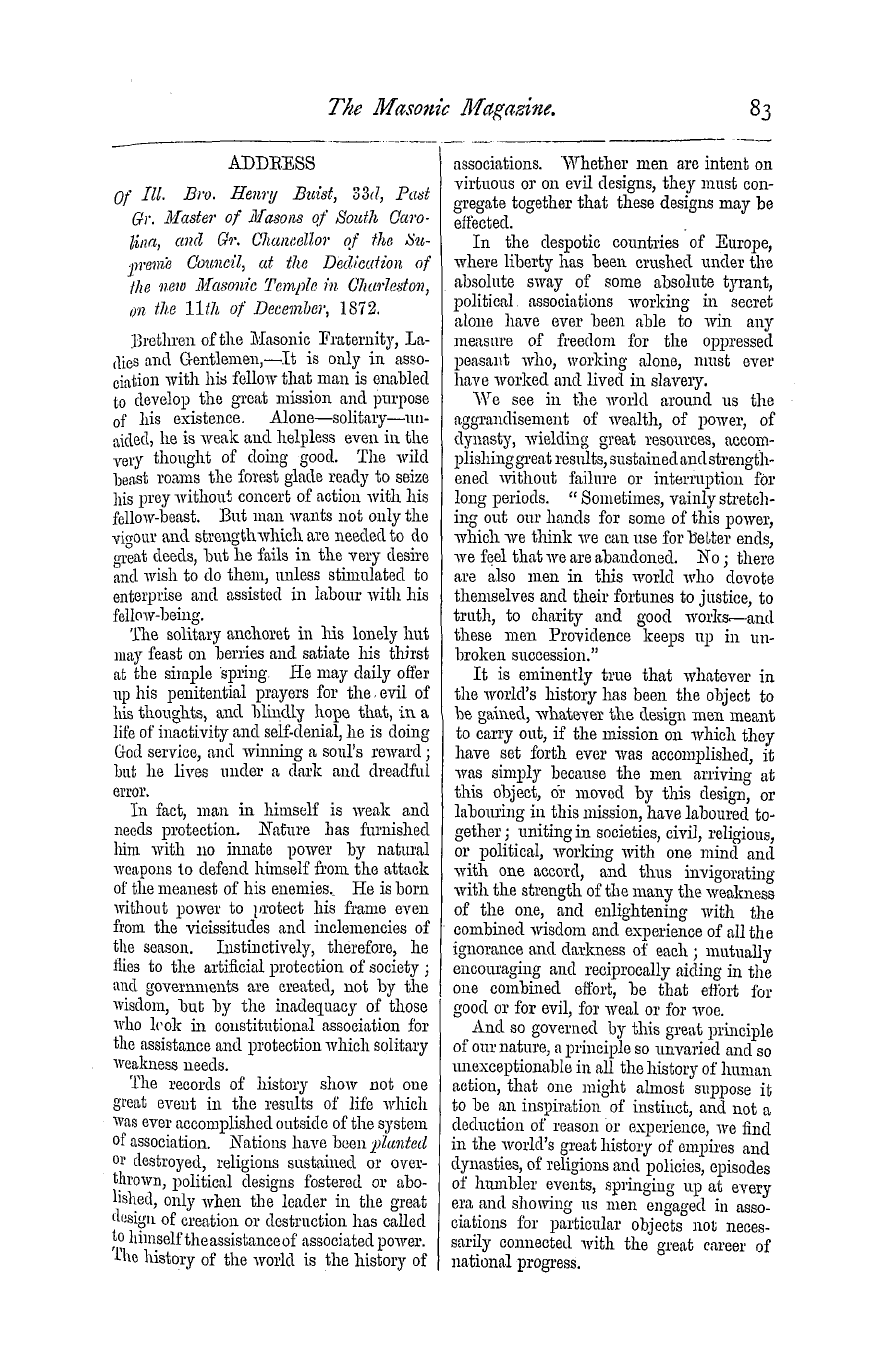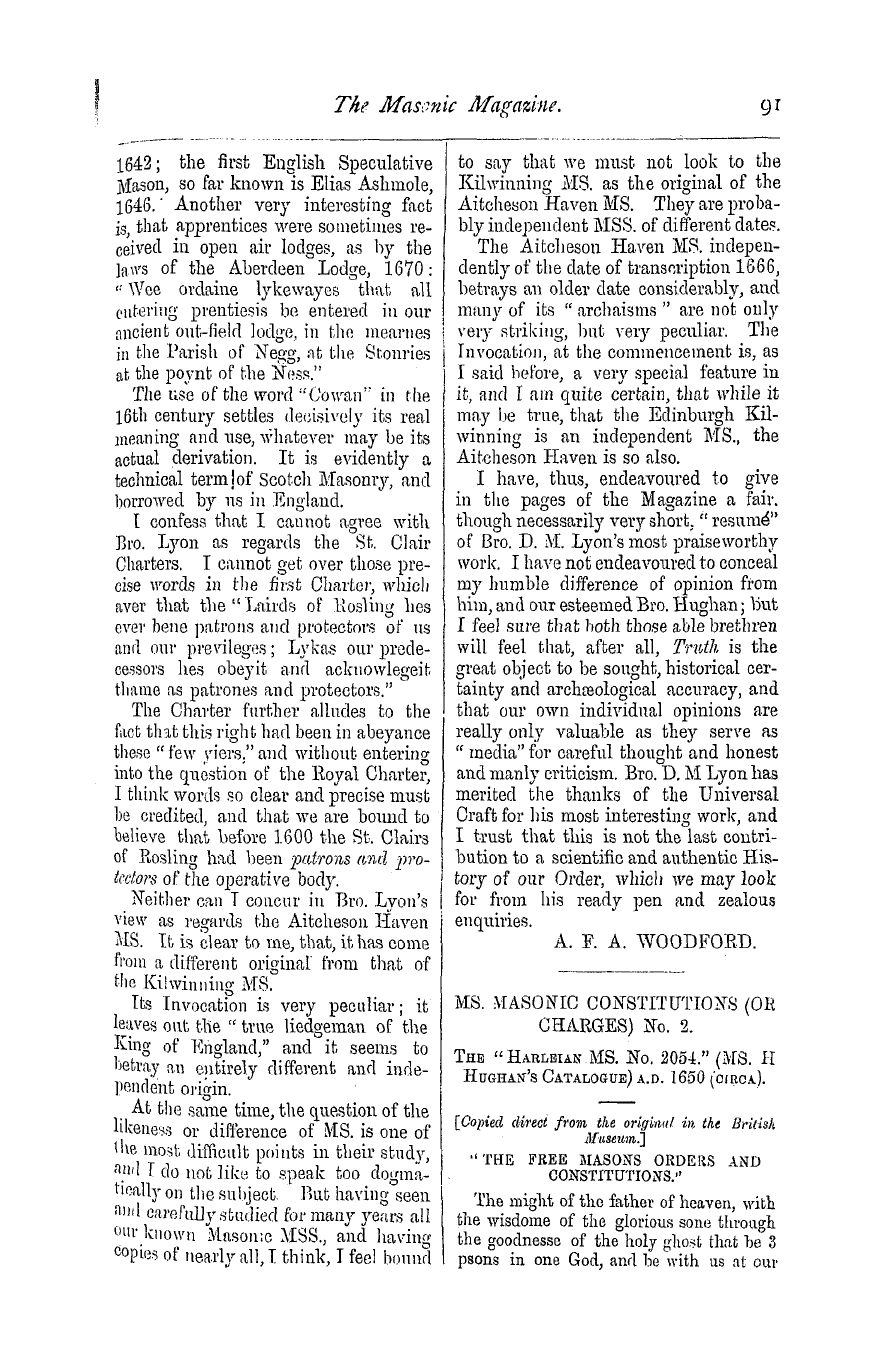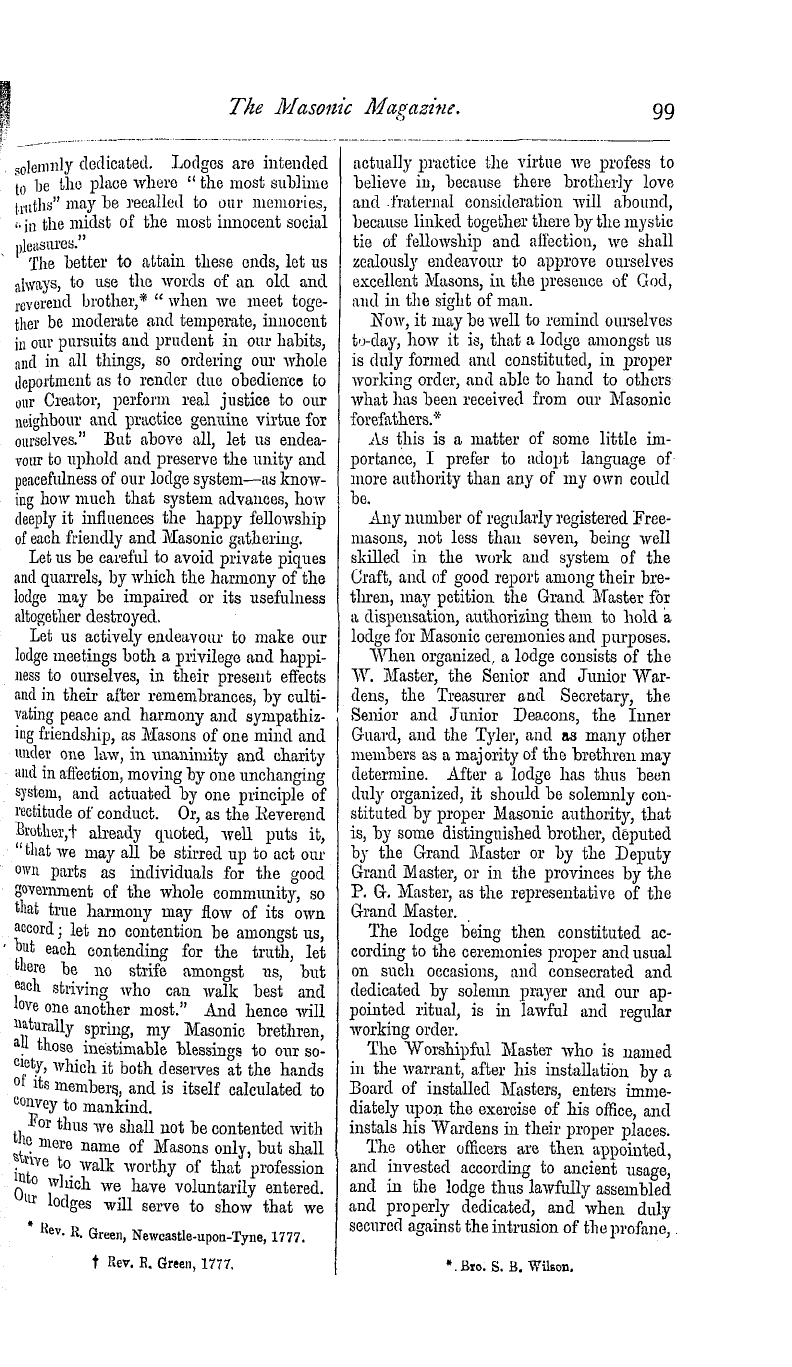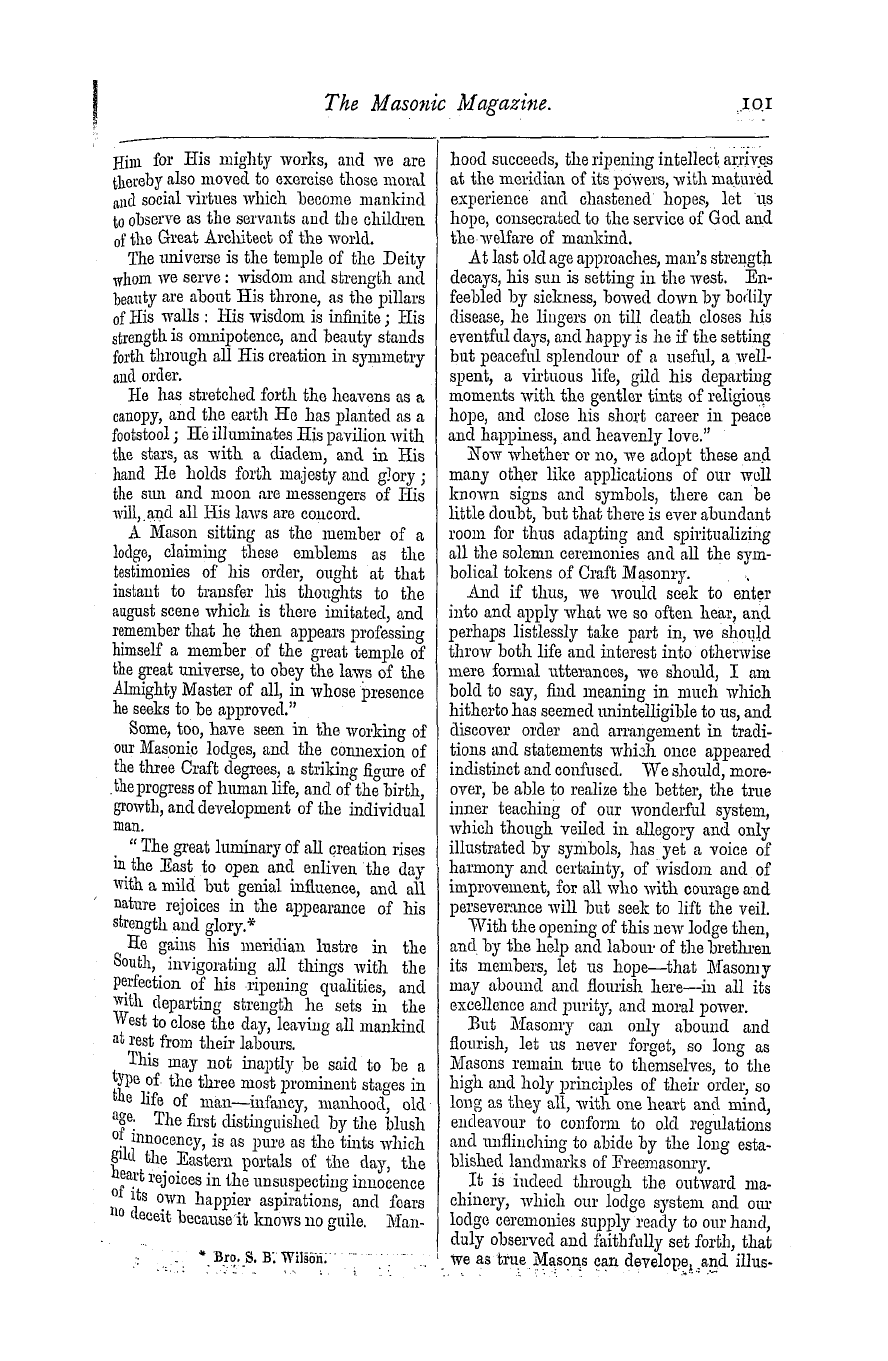Note: This text has been automatically extracted via Optical Character Recognition (OCR) software.
Observations On The Antiquity Of Masons And Masonry In England.
middle of the tAA'elfth century and became the foundation of the different styles of architecture since called Gothic : and by the great encouragement Avhich AA as after-AA ards given to those Societies by several Popes AAdxo granted them particular privilegesthey continued making great
improve-, ments in the art , Avhich AA'as brought to its greatest perfection in the fifteenth century , the architects of that age having surpassed those of ancient Rome in the art of Masonry , and to them the moderns are obliged for the little knoAvledge they retain of it . But
the most refined principles of the art Avere alAA'ays kept secret from all but the most ingenious members of the Fraternity , in imitation of a kiA \ ' AA'hich the ancient architects had established among themselves * not to instruct any but their
, children , their parents or those Avho Avere capable of the knoAA'ledge required in an architect , and Avhose fidelity they could depend on . " They t styled themselves " Freemasons , and ranged from one nation " to another , as they found churches to be
" built , ( for many in those ages Avere in "building through piety or emulation . ) " Their government Avas regular and Avhere " they fixed near the building in hand they " made a camp of butts . A surveyor " govern'd in chief , every tenth man AA'as " called a Warden , and overlooked each " nine . "
Constantino by Avhose munificence these societies began to exist , had more occasion than any of his successors for artists of every sort relating to building . The churches that AA'ere built by him and his mother Helena in Italy , Palestine and GreeceAA'ith the city of Byzantium Avhich
, he rebuilt , allbrded sufficient employment for great numbers of Architects and Masons and notAvithstanding the arts Avere greatly degenerated in that age , there is no doubt but there Avere many artists at that time who had formerly been employed in
building Pagan Temples , Avho Avere induced by the privileges and salaries ailoAved by the Emperor to engage in building Christian Churches , and to teach others the principles of their art Avho were capable of learning * Yitruv Lib . vi pre—non erodietant nisi suos liberos aut cognastos , and eos viros bonos instituebant quibus tiinlaruin remm ficlei pecuniae sine dubitatione periiiittercntur .
them , by this means not only Italy but Palestine and Greece Avere furnished Avith architects and Masons , and in the fourth century Constantinople became the seat of polite arts from AA'hich other countries received them . But notAA'ithstanding tho encouragement given by Constantino for
the improvement of arts , Masonry made but little progress at that time , the buildings erected by that Prince Avere ill designed and Averse executed , many of them were too hastily run up , others Avanted solidity ; and most of them Avanted repairing in less
than tAventy years after they Avere finished . But Masonry degenerated as it was at that time , fell much loAver under the succeeding Emperors , for AA'hen Justinian in the sixth century undertook to rebuild the Church of Sophia AA'hich had been destroyed by
fire in a sedition AA'hich happened in his reign , he determined to build a church AA'hich should surpass all others in magnificence , and be proof against future accidents from fire . The designe AA'as made by Anthemius an ingenious architectand
, wanted neither beauty nor grandeur , but he dying soon after the foundations Avere laid , they found it difficult to procure Masons who were capable of executing it , and AA'bat they did AA'as so very defective , that one side either fell doAvn or cracked
before the other AA'as finished , liOAvever it AA'as at last secured and finished by Isidorus the younger , and other artists in the manner it IIOAV stands . * This building AA'hich is a mixture of Grecian and Gothic though very rich in marbles and ornaments of sculpture and MosaicsheAA'S IIOAV little the
, art of Masonry AA'as understood in tlie middle of the sixth century : But Justinian desirous of transmitting his name to posterity by Avorks of this kind , erected many churches in different parts of the empire , by AA'hich the same style of
architecture and Masonry Ai'ere established in many parts of Europe , Asia and Afrieit , and the art of Masonry improved aud spread into all countries Avhere the Christian religion AA'as propagated . In the beginning of the seventh century
about the year 627 Mahomed the grand impostor setting up himself for a prophet among the Saracens , that people soon after overrun the Eastern Empire and possessed themselves of Syria and Palestine , Jerusalem
Note: This text has been automatically extracted via Optical Character Recognition (OCR) software.
Observations On The Antiquity Of Masons And Masonry In England.
middle of the tAA'elfth century and became the foundation of the different styles of architecture since called Gothic : and by the great encouragement Avhich AA as after-AA ards given to those Societies by several Popes AAdxo granted them particular privilegesthey continued making great
improve-, ments in the art , Avhich AA'as brought to its greatest perfection in the fifteenth century , the architects of that age having surpassed those of ancient Rome in the art of Masonry , and to them the moderns are obliged for the little knoAvledge they retain of it . But
the most refined principles of the art Avere alAA'ays kept secret from all but the most ingenious members of the Fraternity , in imitation of a kiA \ ' AA'hich the ancient architects had established among themselves * not to instruct any but their
, children , their parents or those Avho Avere capable of the knoAA'ledge required in an architect , and Avhose fidelity they could depend on . " They t styled themselves " Freemasons , and ranged from one nation " to another , as they found churches to be
" built , ( for many in those ages Avere in "building through piety or emulation . ) " Their government Avas regular and Avhere " they fixed near the building in hand they " made a camp of butts . A surveyor " govern'd in chief , every tenth man AA'as " called a Warden , and overlooked each " nine . "
Constantino by Avhose munificence these societies began to exist , had more occasion than any of his successors for artists of every sort relating to building . The churches that AA'ere built by him and his mother Helena in Italy , Palestine and GreeceAA'ith the city of Byzantium Avhich
, he rebuilt , allbrded sufficient employment for great numbers of Architects and Masons and notAvithstanding the arts Avere greatly degenerated in that age , there is no doubt but there Avere many artists at that time who had formerly been employed in
building Pagan Temples , Avho Avere induced by the privileges and salaries ailoAved by the Emperor to engage in building Christian Churches , and to teach others the principles of their art Avho were capable of learning * Yitruv Lib . vi pre—non erodietant nisi suos liberos aut cognastos , and eos viros bonos instituebant quibus tiinlaruin remm ficlei pecuniae sine dubitatione periiiittercntur .
them , by this means not only Italy but Palestine and Greece Avere furnished Avith architects and Masons , and in the fourth century Constantinople became the seat of polite arts from AA'hich other countries received them . But notAA'ithstanding tho encouragement given by Constantino for
the improvement of arts , Masonry made but little progress at that time , the buildings erected by that Prince Avere ill designed and Averse executed , many of them were too hastily run up , others Avanted solidity ; and most of them Avanted repairing in less
than tAventy years after they Avere finished . But Masonry degenerated as it was at that time , fell much loAver under the succeeding Emperors , for AA'hen Justinian in the sixth century undertook to rebuild the Church of Sophia AA'hich had been destroyed by
fire in a sedition AA'hich happened in his reign , he determined to build a church AA'hich should surpass all others in magnificence , and be proof against future accidents from fire . The designe AA'as made by Anthemius an ingenious architectand
, wanted neither beauty nor grandeur , but he dying soon after the foundations Avere laid , they found it difficult to procure Masons who were capable of executing it , and AA'bat they did AA'as so very defective , that one side either fell doAvn or cracked
before the other AA'as finished , liOAvever it AA'as at last secured and finished by Isidorus the younger , and other artists in the manner it IIOAV stands . * This building AA'hich is a mixture of Grecian and Gothic though very rich in marbles and ornaments of sculpture and MosaicsheAA'S IIOAV little the
, art of Masonry AA'as understood in tlie middle of the sixth century : But Justinian desirous of transmitting his name to posterity by Avorks of this kind , erected many churches in different parts of the empire , by AA'hich the same style of
architecture and Masonry Ai'ere established in many parts of Europe , Asia and Afrieit , and the art of Masonry improved aud spread into all countries Avhere the Christian religion AA'as propagated . In the beginning of the seventh century
about the year 627 Mahomed the grand impostor setting up himself for a prophet among the Saracens , that people soon after overrun the Eastern Empire and possessed themselves of Syria and Palestine , Jerusalem




